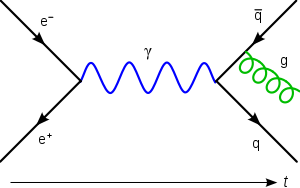
In particle physics, a radiative process refers to one elementary particle emitting another and continuing to exist. This typically happens when a fermion emits a boson such as a gluon or photon.
See also

In particle physics, a radiative process refers to one elementary particle emitting another and continuing to exist. This typically happens when a fermion emits a boson such as a gluon or photon.
See also